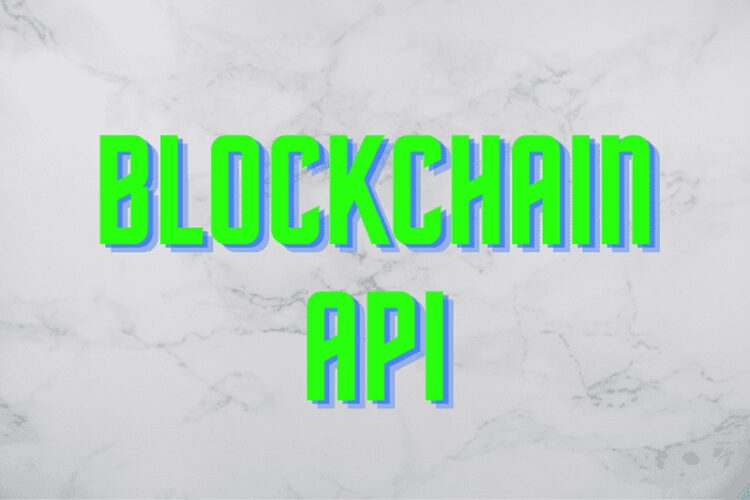Blockchain technology has taken the world by storm. It is a distributed ledger technology that ensures immutability, transparency, and security of data. This technology has found its way into various industries, including finance, healthcare, and logistics.
Moreover, businesses are adopting blockchain-based solutions to improve their operations and increase their efficiency. Blockchain API are becoming increasingly popular as they offer a seamless way for developers to interact with blockchain networks. In this article, we will explore the basics, how they work, and why businesses are adopting them.
How Blockchain APIs Work

APIs (Application Programming Interfaces) are a set of protocols that enable different software components to interact with each other. They provide a way for developers to interact with blockchain networks without having to understand the underlying technology. It abstract the complexity of the network and provide a simple and easy-to-use interface for developers.
They work by providing a set of methods that developers can use to interact with the network. These methods allow developers to read and write data to the network, query the network for specific information, and execute smart contracts. Moreover, they provide developers with the necessary tools to create and manage their own blockchain networks.
Why Businesses Are Adopting Blockchain APIs
Businesses are adopting them for several reasons. Firstly, they provide a seamless way for businesses to interact with blockchain networks. This means that businesses can easily integrate blockchain-based solutions into their existing systems without having to understand the underlying technology.
Secondly, they provide businesses with security and transparency. The immutability of the blockchain ensures that data cannot be tampered with, providing businesses with a secure way to store and transfer data. Moreover, the transparency of the network ensures that all transactions are visible to all participants, providing businesses with a transparent way to conduct transactions.
Lastly, they provide businesses with efficiency and cost savings. By using blockchain-based solutions, businesses can automate their processes, reducing the time and cost associated with manual processes. Moreover, these solutions can eliminate intermediaries, reducing the cost associated with intermediaries.
Types Available

There are several types available in the market. These APIs cater to different use cases and blockchain networks. Some of the popular types are:
Ethereum APIs
Ethereum is one of the most popular networks in the market. Ethereum APIs provide developers with the necessary tools to interact with the Ethereum network. These APIs enable developers to create and deploy smart contracts, read and write data to the Ethereum network, and query the Ethereum network for specific information. These APIs are a gateway for developers to harness the full potential of Ethereum. They empower developers with an arsenal of tools, simplifying the complexities of the Ethereum network. Through Ethereum APIs, developers can seamlessly create, deploy, and manage smart contracts, ushering in a new era of automated and trustless agreements. In the context of Ethereum’s global reach, developers and users alike may find themselves in need of real-time conversions for various cryptocurrencies, including Ether (ETH) to Australian Dollars (AUD). Whether for investment decisions or transaction calculations, knowing the current exchange rate of eth to aud is essential.
Bitcoin APIs
Bitcoin is the first blockchain network that introduced the concept of a distributed ledger. Bitcoin APIs provide developers with the necessary tools to interact with the Bitcoin network. These APIs enable developers to read and write data to the Bitcoin network, query the Bitcoin network for specific information, and execute transactions.
Hyperledger Fabric APIs
Hyperledger Fabric is an open-source network that is designed for enterprise use cases. Hyperledger Fabric APIs provide developers with the necessary tools to interact with the Hyperledger Fabric network. These APIs enable developers to create and deploy smart contracts, read and write data to the Hyperledger Fabric network, and query the Hyperledger Fabric network for specific information.
Examples of Successful Implementations

There are several successful implementations of blockchain APIs in the market. Some of the popular implementations are:
IBM Food Trust
IBM Food Trust is a blockchain-based solution that is designed to improve the food supply chain. IBM Food Trust uses Hyperledger Fabric APIs to provide a secure and transparent way to track the journey of food products from farm to table. This solution enables businesses to reduce food waste and improve the quality of food products.
Ripple
Ripple is a blockchain-based solution that is designed to improve cross-border payments. Ripple uses its own network and APIs to provide a fast and secure way to transfer money across borders. Ripple’s solution enables businesses to reduce the time and cost associated with cross-border payments.
ConsenSys
ConsenSys is a blockchain-based solution provider that offers various blockchain-based solutions to businesses. ConsenSys uses Ethereum APIs to provide businesses with the necessary tools to interact with the Ethereum network. ConsenSys’ solutions enable businesses to automate their processes, reduce costs, and improve efficiency.
Integration of Blockchain APIs

This integration is a crucial step in leveraging the benefits of this technology. The process involves incorporating the functionality and data provided by the blockchain API into existing or new software applications.
To integrate a blockchain API, developers need to understand the API documentation and familiarize themselves with the specific endpoints, methods, and parameters offered by the API provider. They may need to register and obtain necessary API keys or access tokens for authentication and authorization purposes.
The integration process typically involves coding and making API calls within the application’s codebase. Developers can use programming languages and frameworks compatible with the chosen blockchain API to send requests, retrieve data, and interact with the network. They may also need to handle responses and error handling to ensure smooth communication between the application and the blockchain.
During integration, developers need to consider the security aspects of handling sensitive data and transactions. They should implement secure communication protocols, such as HTTPS, and follow best practices for data encryption and storage. It is also essential to handle exceptions and errors gracefully to provide a seamless user experience.
Testing and debugging are integral parts of the integration process. Developers should thoroughly test the application’s functionality, validate data interactions with the blockchain, and ensure that the integration meets the desired requirements.
Conclusion

They are becoming increasingly popular as they offer a seamless way for developers to interact with blockchain networks. They provide businesses with security, transparency, efficiency, and cost savings. There are several types available in the market, catering to different use cases and blockchain networks.
There are also several successful implementations of blockchain APIs in the market, including IBM Food Trust, Ripple, and ConsenSys. Businesses that adopt blockchain-based solutions can improve their operations and increase their efficiency.







